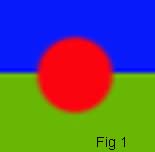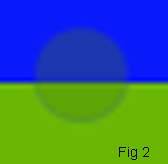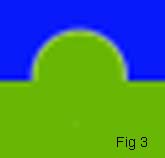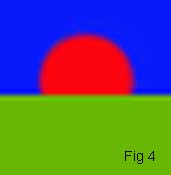Article Index
Page 2 of 3
"I Have That Half Obscured Orb You Wanted!"
In addendum to the Final Orb Article...
After one of our articles (and the final article) about "orb" phenomena went up, we said that "visual orbs" or, one's actually seen and seemingly without natural explanation were definitely something that most paranormal researchers were interested in hearing about. It was just that "photo orbs" seem to have a definitive answer now in the "natural" world.Now, the most common arguments we've heard so far are as follows...
What about orbs in motion? What about streaking orbs?
Any still photograph that is taken and has an item or thing in the frame that is moving at a decent rate of speed will produce a "tracer" effect. This can happen on a small scale as well as a large scale (Dr. Maccabee did touch on this in his experimentation) and it is possible for a particle of dust, dander, snow or whatever to be moving very rapidly with seemingly no wind or other element to push it and be caught by the flash. As for the 'dancing orbs' caught usually by infra-red or "no light" cameras and cam corder's, as stated in the original article, these cameras work by projecting out an infra-red beam that, when this beam connects with anything small and close to the lens (or even not too close) will make it appear white and brilliant and if it's a particle caught in a weird draft or an insect flying about, it will appear to be a 'dancing' white ball of light because the infra-red is incapable of showing the detail to the lens and tape in the machine.
If we are to accept that dust particles are everywhere and that this is a common thing, how come *all* our photos don't have orbs?
Like most natural phenomenon, you have to have a series of protocols (naturally occurring) to produce the effect. Although it is absolutely and indisputably true that there is almost no such thing as a completely dust and particle free environment, it's not true that there are large particles of reflective matter flying about at the moment you take your photo or image. We all know that two large storm clouds flying about overhead cause lightning but you can have the right clouds and atmosphere and no lightning will occur. Well, you can be in an extremely dusty, snowy, rainy, etc. condition and manage to snap a photo without an orb. Conversely, you can be in a seemingly unaffected area and because that one particle floats or whatever in front of the lens that you don't see and capture and orb. As the experiments and notes in the original article are and have been repeated, I don't think this is deniable. If the atmosphere was truly full of particles, much like a joke a friend and I have told about the City of London, England, the air would not only be visible but almost have 'texture'. Most of us have been in areas that have been extremely dusty or filled with particles and it's difficult to see and sometimes breath. Thankfully, the majority of our planets atmosphere has only "x" number of large particles in the air per million. Still, in the grand scheme of things, this is a very large number to be discounted and therefore it is impossible to ignore the probability of a particle being photographed as an orb or some such thing.
As an excellent case in point, we were invited to take snap-shots of a haunted location undergoing extreme renovations. This was a large building with five stories. We would go up the stairs to each floor, take a photo of the hallway, go to each office and snap a picture of the doorway into the room and then enter one-pace only (for safety and security reasons as asked by our guide*) and take one or two interior images. In all the photos, only the interior room images had orbs which is understandable as by stepping in to the room, we stirred the air (even that slightly) and the dust, dorment when we snapped our external image, flew into the air. This was not "mounds" or "clouds" of dust but invisible-to-the-naked-eye amounts but, it's a given that indeed, these were dust flash orbs. (We did repeat the experiment with success.)
So, initially, no orbs but lots of dormant dust followed by a small stirring and all of a sudden, orbs.
* - Nota Bella for other Researchers: We were very fortunate to be allowed to do this photo shoot and one thing that would escape most is I was the only person allowed to go past the stairs at all except for our guide. The reason, my hiking boots are safety boots with a steel toe and shank. Something to consider if being allowed to enter a construction or renovation situation to look around. Proper footwear allowed me greater access.
I have seen MANY half obscured orbs!
Possibly. We too, have had many submitted but, not all of them stand up to scrutiny and I'd like to address this right now...
 |
 |
 |
 |
Like all the articles here, I do wish to point out TWO very important things...
First of all, *we* (the GHRS) are not fully debunking and would accept and appreciate valid evidence. We also are not saying all your images of orbs are dust and other airborne particles but if you wish to have validation, not only to the image being paranormal in origin but as "proof" of ghosts, you must be willing to meet certain criteria. We cannot and will not be able to say "That's a ghost!" in an image unless we were intimately involved with the image being taken and the developing process so we cannot "validate" your photo and would not insult you by trying. Your belief is your belief and what we are asking is that in order to make *us* fully believe or take better stock, please remember that we need better and more valid evidence... even if someone does supply one of the aforementioned obscured orbs, in our guesstimation, we would need to see this becoming more and more "normal" to see them as opposed to probable lens-orb/flash-orb images.
But in tests, orb phenomena and electro-magnetic fields seem to be linked!
Not to sound rude or nasty but what tests? We would honesty like anyone who has information proving a correlation between "orb photo phenomenon" and increased/decreased/erratic EM field findings *provided* they are done with controlled readings first and with appropriate protocols in place while the readings and photos were taken. (Mean Readings w/no phenomena matched(?) with varied readings w/pheneomena.) If you do know of any, please send us a place to find these documents to study. This email address is being protected from spambots. You need JavaScript enabled to view it.
For those interested in the electro-magnetic part of paranormal research and our findings to date, please click here and read our online article on EMF detectors and EMF studies.




